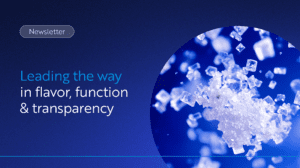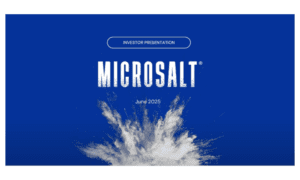That extra salt in your diet can do more than raise your blood pressure. It can also contribute to pancreatic issues, a particular concern for African Americans.
Key takeaways:
- Pancreatic cancer impacts around 64,000 people in the U.S. each year.
- The National Pancreas Foundation reports that African Americans have a higher chance of developing this disease.
- High sodium intake can lead to pancreatic cancer risk factors like diabetes and obesity.
- Americans should limit their intake of high-sodium foods like processed foods and red meat
Cancer is the second leading cause of death in the U.S. after heart disease. And pancreatic cancer has the highest mortality rate of all major cancers, impacting tens of thousands of Americans each year. While we don’t know exactly what causes pancreatic cancer, we do know that certain genetic and lifestyle factors can increase our risk. Here’s a look at those risk factors and what you can do about them.
The increased risk for African Americans
Pancreatic cancer impacts around 64,000 people in the U.S. each year, and around 50,000 people die from it annually. This type of cancer makes up about 3% of all cancers in the U.S. and is the third leading cause of cancer deaths. It’s often fatal because it’s usually detected after it’s too advanced to be removed through surgery.
The National Pancreas Foundation found that the Black/African American community has a higher risk than other populations for developing conditions that can lead to issues with the pancreas. Here are a few of those statistics:
- 31% of Black/African American men are obese.
- 44% of Black/African American women are obese.
- Adults in the Black/African American community are 60% more likely to have diabetes than non-Hispanic white adults.
- Black/African American adults are more likely to develop acute pancreatitis, which is linked to pancreatic cancer.
The African American population has a 15.9 per 100,000 incident rate for pancreatic cancer, compared to 13.4 per 100,000 for the white population. Research also shows that African Americans are more likely to be diagnosed with pancreatic cancer only after it is inoperable.
As for lifestyle factors, obesity is connected to very high triglycerides and gallstones, which are linked to acute pancreatitis. Obesity is also connected to type 2 diabetes, which is another big risk factor for pancreatic cancer. People who suffer from obesity and acute pancreatitis can experience additional severe ailments such as organ failure.
Where does sodium fit in?
A high-sodium diet has been connected to a range of adverse health conditions. The risks of excess sodium levels include:
- High blood pressure (hypertension)
- Heart disease and heart attack
- Stroke
- Kidney disease and kidney stones
- Obesity
- Diabetes
- Stomach cancer
One study found that a high intake of salt, pickled foods, and processed meats was associated with a significantly higher risk of gastric cancer, and the risk was still present even when people consumed moderate amounts of salt. A high-salt diet has also been linked to obesity, insulin resistance, and metabolic syndrome, all of which impact the risk of developing diabetes.
In short, a high-sodium diet increases your risks for certain conditions, including many that can be severe or lethal. But the good news is that you can easily reduce these risks simply by consuming less sodium.
Avoiding unhealthy foods
The National Pancreas Foundation recommends making better eating decisions as the first step toward protecting yourself from pancreatic cancer and other diseases of the pancreas. This means avoiding foods like red meat, processed foods, and high-fat foods, and eating more fresh fruits and vegetables, as well as whole grains.
These healthy foods still have natural levels of sodium, which your body needs to function properly. They just don’t have the added salt that leads to excessive salt intake. The average American consumes 3,400 milligrams of sodium every day, far above both the ideal 1,500 milligrams a day and the recommended limit of 2,300 milligrams per day.
Where does all that sodium come from? Perhaps not surprisingly, around 70% of the sodium we consume comes from restaurant and packaged foods. When these foods are being prepared and processed, salt may be added as both a flavor enhancer and a preservative.
Cutting processed foods out of your diet, or at least limiting them as much as possible, can help significantly reduce your sodium intake. This, in turn, can lead to a lower risk of obesity and diabetes, since high-sodium diets have been linked to those issues. But remember that you’ll also lower your risks for heart disease, stroke, high blood pressure, and some cancers with a low-sodium diet. Pair these eating habits with more physical activity, and you’re on your way to improving your overall well-being.
Finding low-sodium snacks
Another way to improve your diet is to find healthier alternatives to your favorite snacks. Many snack foods, like chips and crackers, contain far more salt than your body needs. Instead, consider buying nuts without added salt, snacking on fruits or vegetables, or finding treats with reduced sodium levels. Pay close attention to food labels so you know exactly how much sodium a product contains.
Also, check out MicroSalt®’s breakthrough alternative to high-sodium chips. MicroSalt®’s innovative process creates salt particles that are 100 times smaller than average salt, which makes it possible to use 50% of the salt in our SaltMe®! Chips without sacrificing flavor. It’s true. With MicroSalt®, you can reduce the amount of sodium you consume when snacking without losing any of the taste you crave.
Contact MicroSalt® to learn more about our patented technology and our products.




